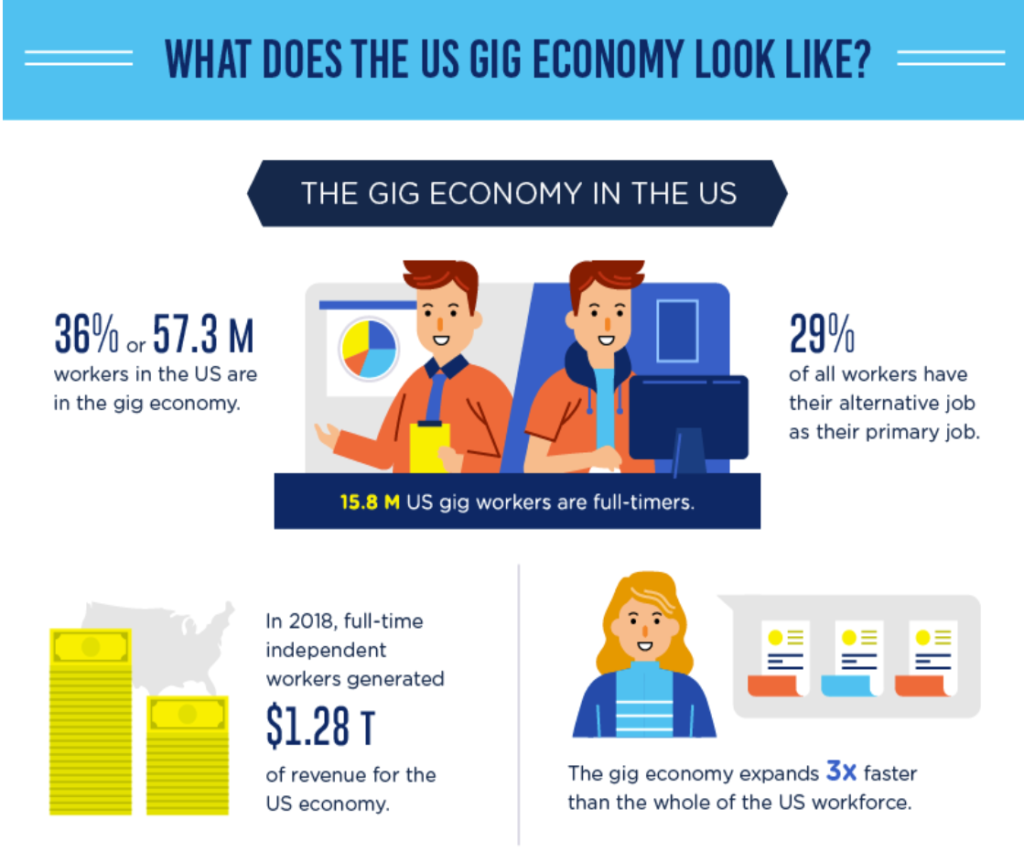 The 21st century is only two decades old but has already brought about tremendous changes in the ways we live and work. One of the biggest changes has been the rising popularity of the gig or freelance economy, which is expanding three times faster than the total US workforce.
The 21st century is only two decades old but has already brought about tremendous changes in the ways we live and work. One of the biggest changes has been the rising popularity of the gig or freelance economy, which is expanding three times faster than the total US workforce.
Technology has accelerated much of this growth, by facilitating entirely new business models and businesses, such as Uber, GrubHub, Upwork, and Fivver, just to name a few. As the gig economy expands, it seems likely to threaten more of the traditional jobs that have been employing millions of people for years.
While traditional, salaried jobs focus on full-time employment, the gig economy is quite the opposite. As the name itself suggests, the gig economy consists of temporary jobs, often involving online gigs that don’t require anything but an internet connection and some in-demand skills. Some people work in the gig economy full-time, while others do freelance work as a side job.
This type of employment has become most common among people in 18-34 year-olds, with 38% of respondents in this age group working as freelancers. 51% say that they wouldn’t return to their traditional jobs, as the gig economy provides them with more flexibility and independence than salaried work.
The gig economy is also an attractive option for employers. One of the most significant benefits for businesses is that they can call upon more workers when demand is high, or when they have difficulty finding full-time workers.
However, there is also a darker side to this trend. As companies shift more work to gig workers and freelancers, there are fewer positions available for those seeking traditional, salaried jobs. Cheap freelancers and temporary workers can overcrowd the market, lowering earnings for all: 85% of gig workers earn less than $500 per month.
Whether you believe the benefits outweigh the disadvantages or not, the gig economy is growing and here to stay–and currently generating about $204 billion in gross revenue globally. The infographic below paints a more much detailed picture, and can help you to make more informed decisions about taking this path.
Infographic URL:https://teamstage.io/gig-economy-statistics/
Source: Laurie McCabe’s Blog
